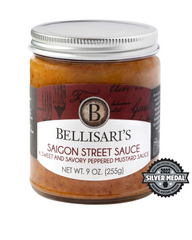
Like garlic, leeks, and onions, shallots are a flavor-building vegetable in the allium family. They’ve been a common ingredient in Asia and the Middle East since ancient times, with crusaders bringing them home to Europe in the eleventh century. Today, shallots are a staple in both home kitchens and restaurants as well as in two of our favorite products – our award winning Balsamic, Shallot & Black Garlic Spread and our Blue Cheese, Honey & Shallot Spread.
There are a few different varieties of shallots; the most common are Jersey shallots and French Grey shallots. Jersey shallots are plump and round, while French Grey shallots are the slightly smaller and longer ones with gray-tinted skin. French Grey are the choice of many restaurant chefs, but Jersey shallots are more readily available in most supermarkets.
Shallots, as mentioned, are in the onion family. In the onion family, they grow from a bulb (called the mother) in clusters (the daughters!). Fun fact – shallots and other guys who make you cry when you cut them are called lacrimators. Perhaps you’ve dated one! 😂
Knowing about the taste and texture of shallots, as well as the perfect way to use them in food recipes, can be a big help when you are cooking. For example, you have your recipe ready and it asks for shallots. But you only have white or yellow onions on hand. Can shallots and onions be used interchangeably?
Sorry but no, in most cases they cannot. The difference between shallots and onions is three fold – the way they grow, their taste, and how to use them in recipes.
Onions and shallots may be from the same family, but they are definitely different. Shallots grow differently from onions. Regular onions grow as a single bulb, but shallots grow in clusters, more like a head of garlic does.
Do Shallots and onions taste the same? Again, the answer is no. Shallots have a milder taste and smell than onions do. It is often common for shallots to be eaten raw, since their flavor is so delicate. In addition, when shallots are cooked, they lose their flavor quickly, so if the recipe is asking for cooked onions (like in a stir fry ) then onions are preferable.
Use shallots in recipes such as salads or in a vinaigrette. They’ll add an onion-like flavor without too much of a bite. This makes them especially good as a seasoning in raw applications like vinaigrettes or salads, where they add onion flavor without too much punch, or in slow roasted or braised dishes, where their sweetness can really enhance a dish without watering it down. The flavor of shallots is mild and sweet with just a hint of garlic flavor. Gourmet chefs love to use them since they don’t have the tangy bite that onions do.
One great way to try shallots is by trying either one of our spreads that feature the subtle but tasty vegetable – our award winning Balsamic, Shallot & Black Garlic Spread and our Blue Cheese, Honey & Shallot Spread. However you decide to use them, have no fear of the shallot. After a little experimenting, I’m sure you’ll be wondering why you haven’t tried them before. If you have any shallot ideas or stories, we’d love to hear about them in the comments. Happy experimenting from all of us at Bellisari’s!






